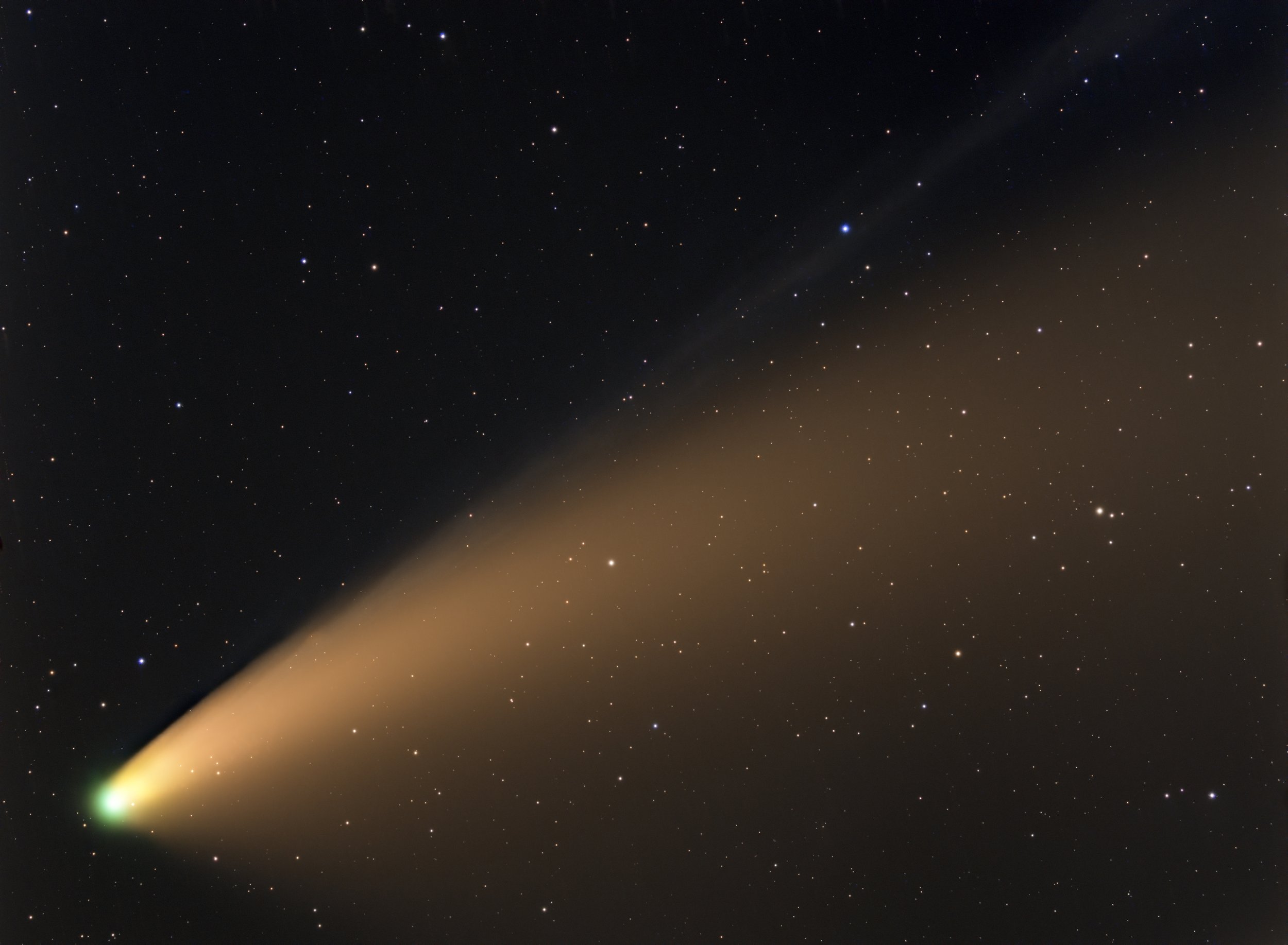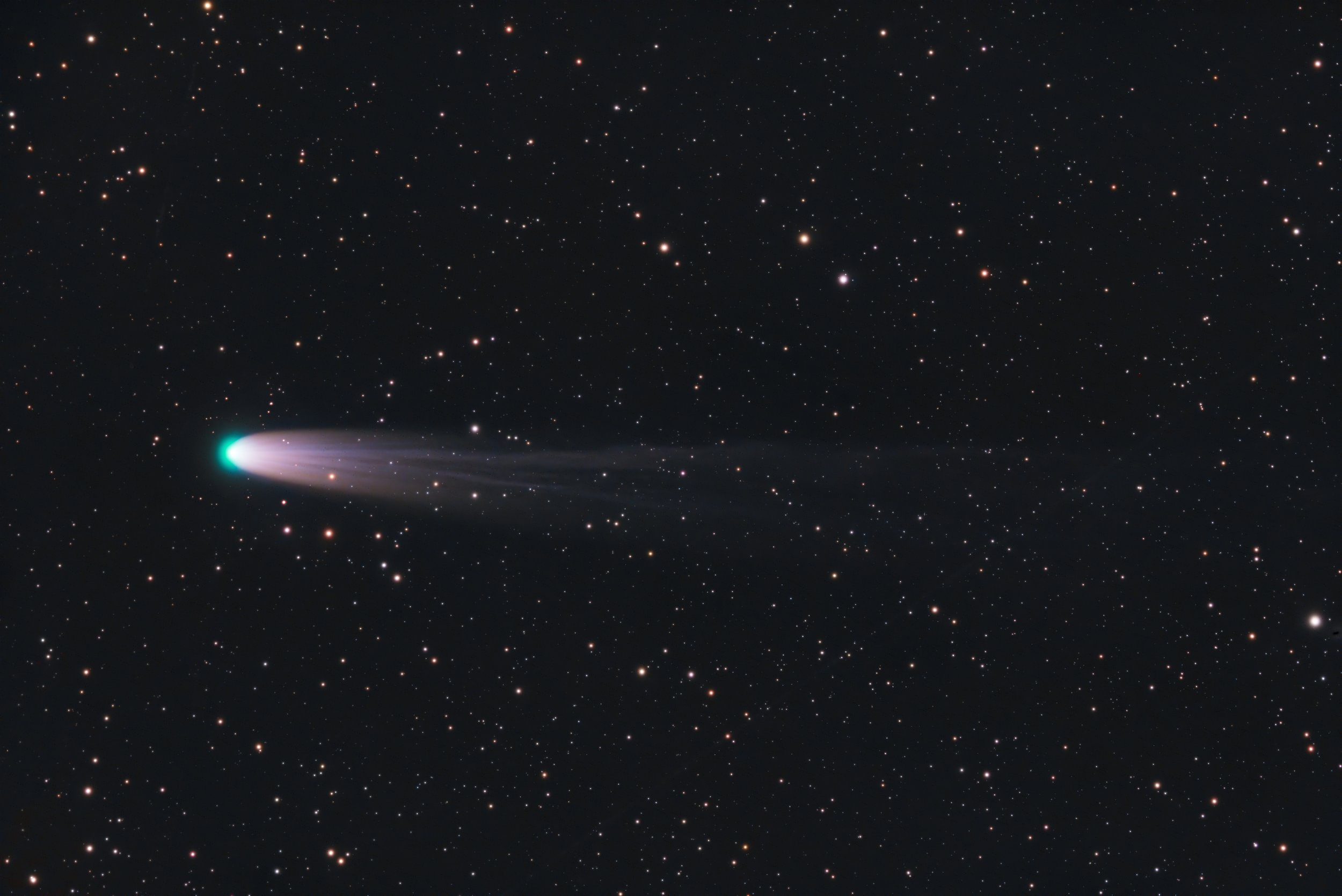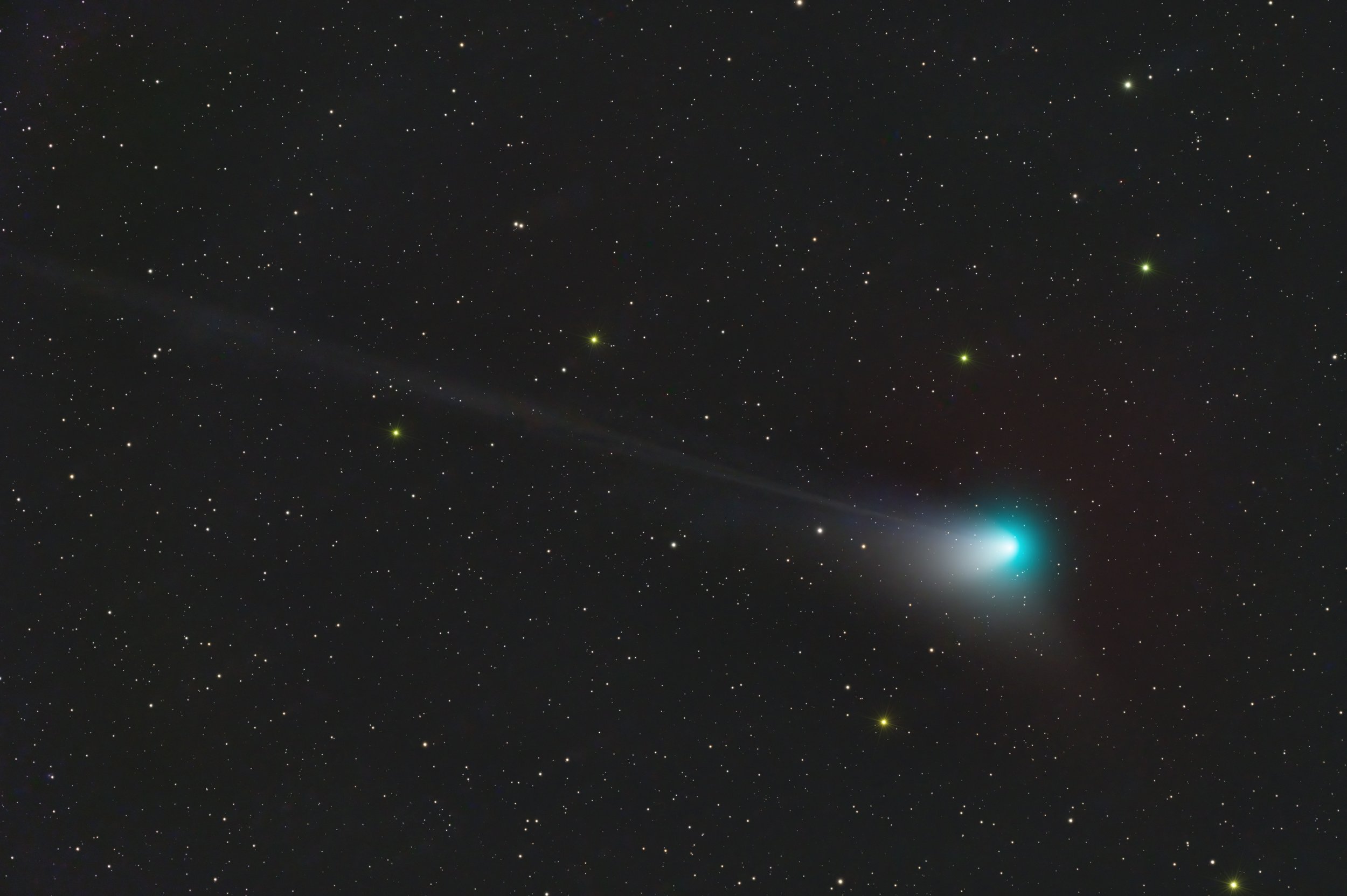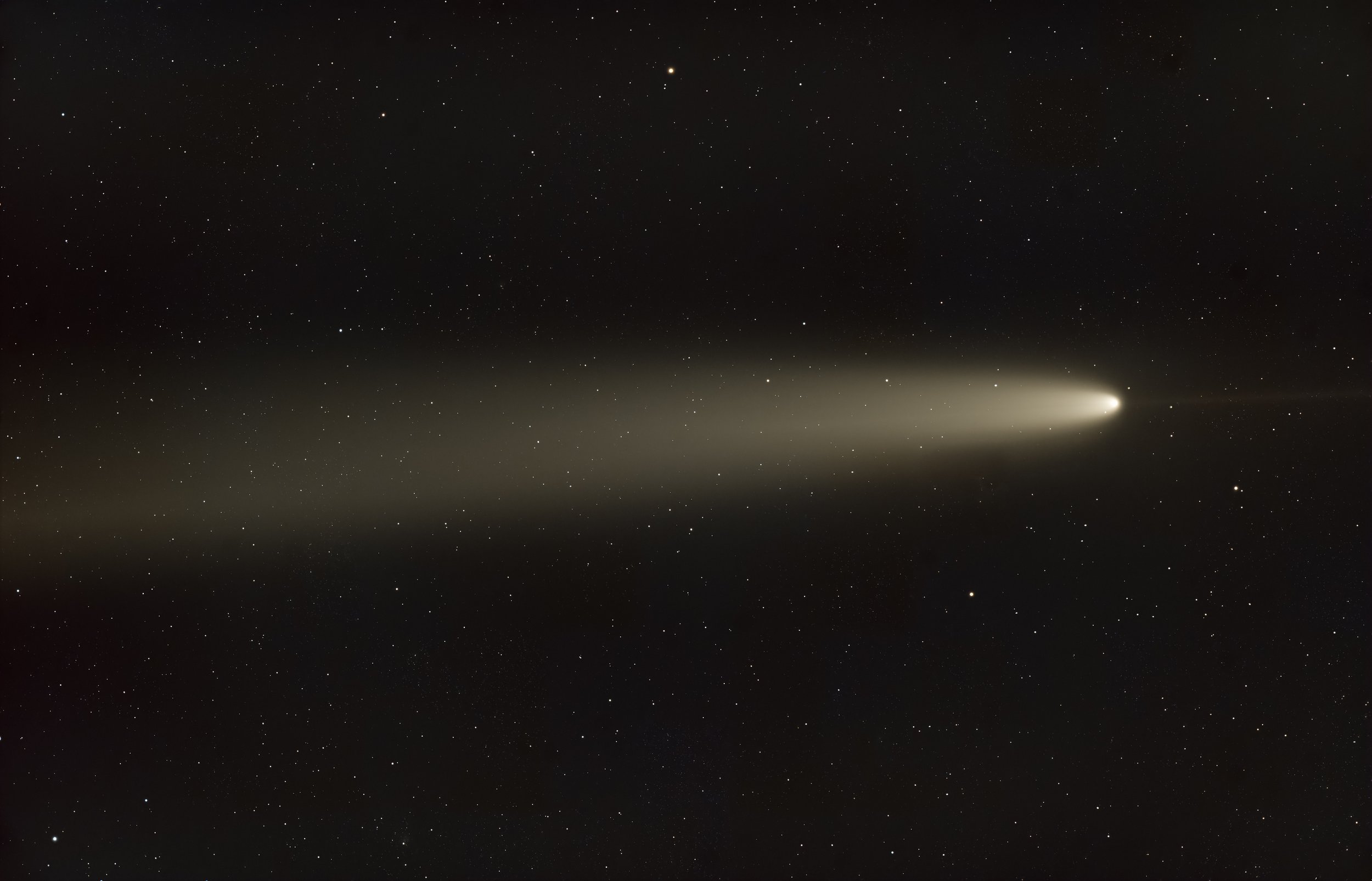Comet Lovejoy - C/2014 Q2

Taken from Big Cypress National Preserve. LRGB 180 second exposures.
This about on hour of movement from comet LoveJoy C/2014, taken Friday 1/09/2015
This image of LoveJoy C/2014 was taken 1/09/2015 at Harold Campbell, a site with a lightly darker sky from where the version below was taken. I still had a ton of hight thin clouds to deal with and I suspect that is why the tail is not as bright as other images I have seen. I will keep trying until this infrequent visitor is gone.
Lum- 180 binned at 1
Red - 180 binned at 2
G,B - 60 Binned at 2
This version was stacked using Pixinsites "comet align" and "image Integration" tools. I also added star spikes for some astro bling.
This is my second attempt at capturing comet LoveJoy from my house (hope to try again this weekend from a darker site). This is about 50 minutes of data, Lum 20 x 60 seconds Binned 1, RGB 20 x 30 seconds Binned 2.
The subs were staked twice, once on the comet and once on the stars resulting is 2 images. The image used for the background was aligned on the stars and staked using sigma clip. This leaves just stars and the comet is mostly rejected. The other is aligned on the comet and staked using medium combine, this reject most of the stars leaving just the comet. The final 2 images are combined into one using Photoshop.
From Wikipedia
C/2014 Q2 (Lovejoy) is a long-period comet discovered on 17 August 2014 by Terry Lovejoy using a 0.2-meter (8 in) Schmidt–Cassegrain telescope.[1] It was discovered at apparent magnitude 15 in the southern constellation of Puppis.[1] It is the fifth comet discovered by Terry Lovejoy.
By December 2014 the comet had brightened to roughly magnitude 7.4,[4] making it a small telescope and binoculars target. By mid-December the comet was visible to the naked eye for experienced observers with dark skies and keen eyesight.[5] On 28−29 December 2014, the comet passed 1/3° from globular cluster Messier 79.[6] In January 2015 it will brighten to roughly magnitude 4−5,[7] and will be one of the brightest comets located high in a dark sky in years. On 7 January 2015 the comet passed 0.469 AU (70,200,000 km; 43,600,000 mi) from Earth.[8] It crosses the celestial equator on 9 January 2015 becoming better seen from the northern hemisphere.[9] The comet will come to perihelion (closest approach to the Sun) on 30 January 2015 at a distance of 1.29 AU (193,000,000 km; 120,000,000 mi) from the Sun.[2]
Before entering the planetary region (epoch 1950), C/2014 Q2 had an orbital period of about 11000 years.[3] After leaving the planetary region (epoch 2050), it will have an orbital period of about 8000 years.[3]
I’ve been a dedicated to Squarespace fan for 20 years. Love the product, people and company.





